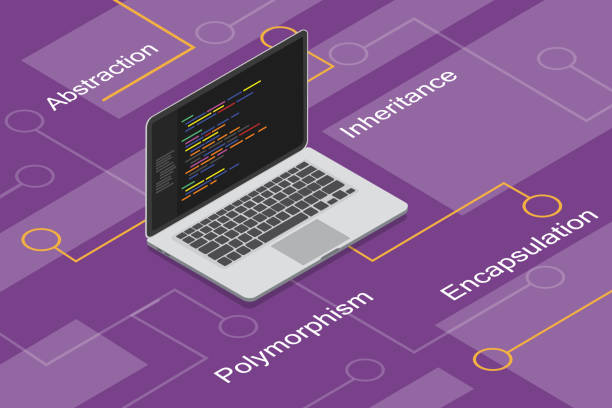Object oriented programming principles

This article will be using Java to explain the basic Object Oriented Principles
Objects and classes
In order to understand the object oriented programming concepts first, you should understand the concepts of objects and classes.
Class
Class is a blueprint of an object. In simpler terms, class contains the basic structure an object.
Just like a blueprint of a building, class is just the
design or the structure of an object.
If you think about any object in the universe, there are a set of properties or attributes and a set
of actions it can perform which defines the object. Similarly, what goes inside a class can be
generalized as properties and methods (actions the object can perform) that defines the object.
Object
Say we have designed a blueprint
for a building that we want to create. By just creating the blueprint the said building doesn't
start
existing physically. In order for the building that we designed in the blueprint to become a reality
we must construct the building. Similar to that what we are doing by creating the class is just
creating the blueprint We must construct or instantiate an instance using
the structure we defined in the class in order for an object to get created.
An Object is basically an instance of a class. Object is the actual thing that exists and that is
intractable. If we want to access any method or property that we defined in the object's structure
we must create an instance of the said object. Generally, we can create as many objects as we need
from a class unless explicitly restricted (out of scope of this article).
Inheritance
Inheritance facilitates improving
reusability and maintainability of code. It allows child classes to access accessible properties and
methods of
the parent class when extended. Java only allows vertical inheritance which is, a child class can
only extend a single parent class. But other languages like C++ support horizontal inheritance which
allows extending from multiple parent classes. Implementing interfaces also a type of inheritance.
Although only one class can be extended by a child class, multiple interfaces can be implemented by
a single child class.
Let's look into a real world example to further understand the concept of inheritance. Let's take
the relationship between Animal and Dog. For inheritance to work, the relationship between a child
class and parent class should be an "is a" relationship. The example we are considering above
conforms the above relationship. i.e Dog (child/sub class) is an Animal (parent/super class). If two
classes do not conform the above relationship, then it means inheritance should not exist between
those two classes.
Encapsulation
Encapsulation allows controlling the access to properties and methods in a class. This minimizes
unintended mutations to the object instances and unintended parties from accessing the object
instances. Why is encapsulation necessary? We
definitely don't want our classes to be abused or the object instances being accessed by unwanted
parties by a mistake or purposely which
can cause security concerns and bugs. So we also should control the access to which methods
and properties can be accessed from outside and even when accessed we have the ability to monitor.
This is important for the general security of the application.
Java achieves encapsulation by access modifiers mainly. There are 4 main access modifiers in Java
- Default - When no access modifier is defined for a property or a method. Default methods and properties are accessible by the sub classes and other classes within the same package
- Public - These properties and methods can be accessed by anyone (any class) from within and outside a given package
- Protected - These properties and methods can only be accessed by the class itself, its' subclasses and classes within the same package
- Private - These properties and methods can only be accessed by the class itself.
Polymorphism
Polymorphism refers to multiple forms of the same thing. In programming this means the ability to
provide multiple implementation to the same thing. This is a mechanism mainly introduced to cope
with the ambiguity in programming. Polymorphism along with inheritance enables code reusability and
reduces code repitition. Inheritance allows us to reuse logic down an inheritance hierarchy and
polymorphism allows giving our own implementation at a given level of the hierarchy if required. If
this was not possible inheritance alone would not be able to achieve this level of code reusability.
Polymorphism can be subdivided into two as,
- Compile-time/static polymorphism (overloading)
- Run-time/dynamic polymorphism (overriding)
Overloading
Concept of overloading is to provide multiple implementations to a method with the same name but with unique method signatures. Method signature refers to the method name and the list of parameters a method accepts. This uniqueness in method signatures can be achieved in two ways.
- Number of parameters
- Data types of the parameters
Since this polymorphism happens during the compile time this is also referred to as static polymorphism
Overriding
Concept of overriding is to provide a new implementation to an inherited method or a property from a super (parent) class within a subclass (child). This type of polymorphism happens during the run-time therefore also known as runtime polymorphism.
Abstraction
Abstraction basically refers to only exposing what is required to the outside. This means, any unwanted details such as the logic of a certain method is totally blacked out from the user. This is done since internal logic of something say a method for an example is not required to be known by the user. So any unwanted details are hidden away to minimize the cognitive complexity. It's similar to the plastic cover on a home appliance like a blender. By having a cover like this will make it easier to use the blender by a normal user without having to worry about how blender works internally.
Wanna read more? See all blogs here